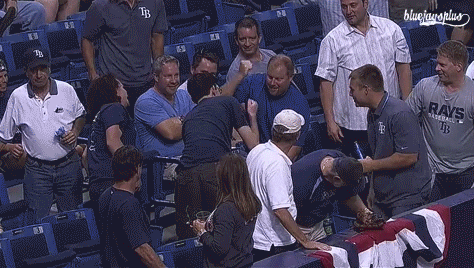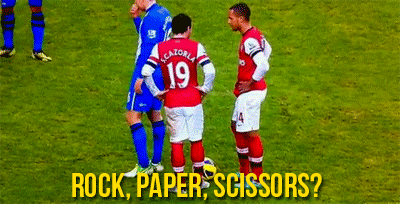How to Win a Tie Every Time
The questions that tie us up:
Who's jumping first? Who's tie can I wear? Who's picking up the tab? Who's going to tie me up? Who gets the last Twinkie? Who's cleaning the toilet? Who's sleeping on the floor? Which dark alley should we take? Do we wear ties or bow ties?
These questions and an infinite number of others like them pop up on a daily basis, forking our roads until a resolution is made. So, what do we do?
Rock, Paper, Scissors (We like Rock, Tie, Scissors, but whatev):
RPS is the all-time greatest, time-tested tie-breaking method ever devised by mankind. A westernized version of a Chinese hand game called shoushiling that dates back to the Han Dynasty (206 BC-220 AD), RPS is the go-to method for resolving any situation where things have gotten all knotted up in a tie (pun very much intended). And if you read on you'll learn what separates the novice RPS player from the pros.
RPS stats to keep in mind:
The world RPS society (yeah, real thing) reports, in tournament play, rock is played the most at 35.4%, followed by paper at 35% and scissors at 29.6%. Men are suckers for the rock; women, they love to slap down some paper. So, throw accordingly.
Round one, all tied up? End it quick with strategy 1:
We know that rock is what men love to throw. Rock also happens to be the preferred choice if a game is instigated quickly. Let's say you and a buddy are at an impasse. Great. Don't ask if friend-o wants to play RPS, just start pumping your fist. He'll take the bait and join without time to think. The next thing that will happen is you slashing up the rock-fist he will inevitably throw to shreds with some vicious paper cuts. Check the gif below to see this strategy in action.
Bat flies in stands. Two guys go for it, get there at the same time. It's a tie. Who gets the bat? The guy who knows the other guy is about to throw rock, that's who. I don't know, but I would put money on who suggested playing RPS.
The tie goes to you says strategy 2:
Of course, after you win, you're likely to hear, "Okay, best of three". To this you should respond with a move I like to call: I'm-calling-out-what-I'm-about-to-throw-and-then-I'm-going-to-throw-what-I-said-I-was-going-to-throw. The trick is, most people don't believe you will throw what you say you're going to throw and they will adjust according to the bluff they think you're making. Say you call out "Rock. Here comes rock, baby." If your opponent believes you, they go paper. But they think you're full of it, so they're throwing scissors thinking you're about to toss paper, bluffing aggressive to go passive. And that's when you smash your opponent with the rock you said was coming, punishing them for ever challenging you, and, quiet frankly not trusting you.
Still tied after two rounds? Really? Okay, well, strategy 3 says "This ends now!":
If, by chance, there is still a tie after two rounds know this: the novice player rarely throws the same sign more than twice in a row. If you've seen rock, rock, chances are paper or scissors are coming down. The recommended strategy of the pros is to throw whatever sign the double sign would beat. If two rocks fall in a row, you want to go with scissors. If your opponent switches to paper, you win. If scissors, it's a tie.
Now, grasshoppa, you are ready to destroy anyone with hands that dares challenge you at RPS. Take this skill and use it wisely. Like making the losers pay for your ties.












